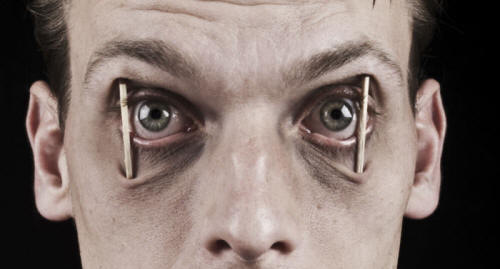
 |
While there is no universal agreement concerning what constitutes adequate sleep duration, the National Institutes of Health suggests that adults aim for 7-8 h of sleep per night . Approximately 28% of adults in the United States reported sleeping 6 h or less based on data from 2008 to 2010 (reference) Despite decades of innovative sleep research, escalating numbers of new sleep specialists and clinics, and an explosion of media attention and public health education initiatives, the epidemic of insufficient sleep and insomnia appears to be getting worse. In any given year, 30% of adults report at least one symptom of insomnia, including trouble falling asleep, staying asleep or obtaining restorative sleep. The first decade of this century saw striking increases in the prevalence of insomnia, its associated daytime impairment, and use of sleeping pills. During this period, the diagnosis of sleep disorders jumped by 270% and the number of prescriptions for sleep medication spiked by 300%. (reference)
 The deleterious
impact of chronic sleep loss on daily life is no longer news. Poor sleep
significantly undermines our physical and mental health by triggering chronic inflammation in
the brain and body. Chronic inflammation is a risk factor for cardiovascular
disease, neurodegenerative disorders, autoimmune illnesses, diabetes, obesity,
cancer and depression. People with insomnia also suffer immensely by night. Beyond obvious
frustrations around their thwarted efforts, and growing anxieties about the
consequences of ongoing poor sleep, many also experience loneliness, shame and
hopelessness. Although these feelings are suppressed in the light of day, they
linger beneath the surface, eroding quality of life and dramatically increasing
the risk for depression and even suicide. The evidence base linking insomnia and suicide is both wide and deep. There
are more than 60 separate research reports that encompass children, adolescents,
young adults, and older persons, and these reports come from the Americas,
Europe, and Asia.
The reports include population studies, clinical samples, chart reviews,
prospective case-control cohorts, and clinical trials. (reference) (image
courtesy)
The deleterious
impact of chronic sleep loss on daily life is no longer news. Poor sleep
significantly undermines our physical and mental health by triggering chronic inflammation in
the brain and body. Chronic inflammation is a risk factor for cardiovascular
disease, neurodegenerative disorders, autoimmune illnesses, diabetes, obesity,
cancer and depression. People with insomnia also suffer immensely by night. Beyond obvious
frustrations around their thwarted efforts, and growing anxieties about the
consequences of ongoing poor sleep, many also experience loneliness, shame and
hopelessness. Although these feelings are suppressed in the light of day, they
linger beneath the surface, eroding quality of life and dramatically increasing
the risk for depression and even suicide. The evidence base linking insomnia and suicide is both wide and deep. There
are more than 60 separate research reports that encompass children, adolescents,
young adults, and older persons, and these reports come from the Americas,
Europe, and Asia.
The reports include population studies, clinical samples, chart reviews,
prospective case-control cohorts, and clinical trials. (reference) (image
courtesy)
Looking at sleep solely through waking-world eyes is like looking at a glorious night sky through dark sunglasses. We are caught in wakism, a subtle but pernicious addiction to ordinary waking consciousness that limits our understanding and experience of sleep. Wakism underlies the medicalisation and domestication of sleep, reinforcing a dysrhythmic, relentless and speedy posture of hyperarousal. Contemporary medical views presume that there’s nothing in the world of sleep worth personally investigating. Sleep itself is believed to lie outside of our potential for awareness. And though we can be aware of dreams, they are too often deemed meaningless. Dismissing the value of dreams shuts the door on our most accessible, direct experience of sleep. It also dampens the sensual dimensions of sleep, which are most evident in dreams. In fact, whether aware of it or not, we routinely become sexually aroused in our dream sleep. (reference)
See also: Bibliography, Booze and dreams, Dream cycles, Dream glossary, Dream hacking, Dream recall, Dreams and brain disorders, Dreams as a source of inspiration, Essential oils, Food and dreams, Herbs for dreaming, Hypnagogic state, Lucid dreaming, Neuroprotective agents, Precognitive dreams, Psychic dreams, Recurring dreams, Shamanic dreaming, Sleeping brain, Sleep deprivation, Weed and dreams, WILD, Yoga Nidra